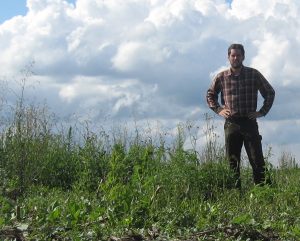Farmers across New York have been struggling with the overabundance of rain this year — meaning that some cornfields never got planted. The result? Weeds have really taken off.
So what? If there’s no crop for weeds to compete with, what’s the danger?
Weeds make seeds, lots of seeds, which could cause a disaster in the next few crops. My research shows that plots where weeds went to seed had 10 times as many weeds the following year. If any of those weeds are herbicide resistant, they’ll drop thousands of herbicide-resistant seeds into farm fields.
But there’s hope. As of late July, most of these weeds are still flowering and haven’t set seed yet. Mowing is a great option to quickly prevent (classic IPM tactic!) the flowering weeds from setting seed. Yes, after mowing those weeds may send up new flowers. So it is important to kill them with herbicides or tillage before planting summer cover crops (check out the Cornell cover crop decision tool) or fall plantings of forage or winter grains.

For many problem weeds, most seeds will die in the first couple years in the soil. So if you can keep weed seeds from entering the soil this year, you can really cut down the number of seeds in your soil. In IPM, prevention is the name of the game.